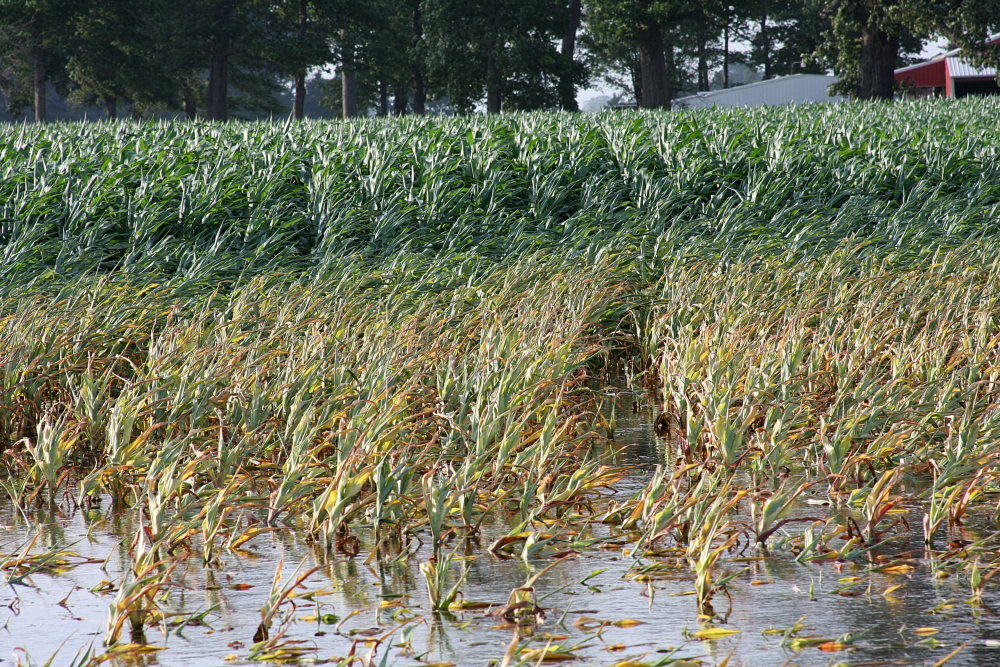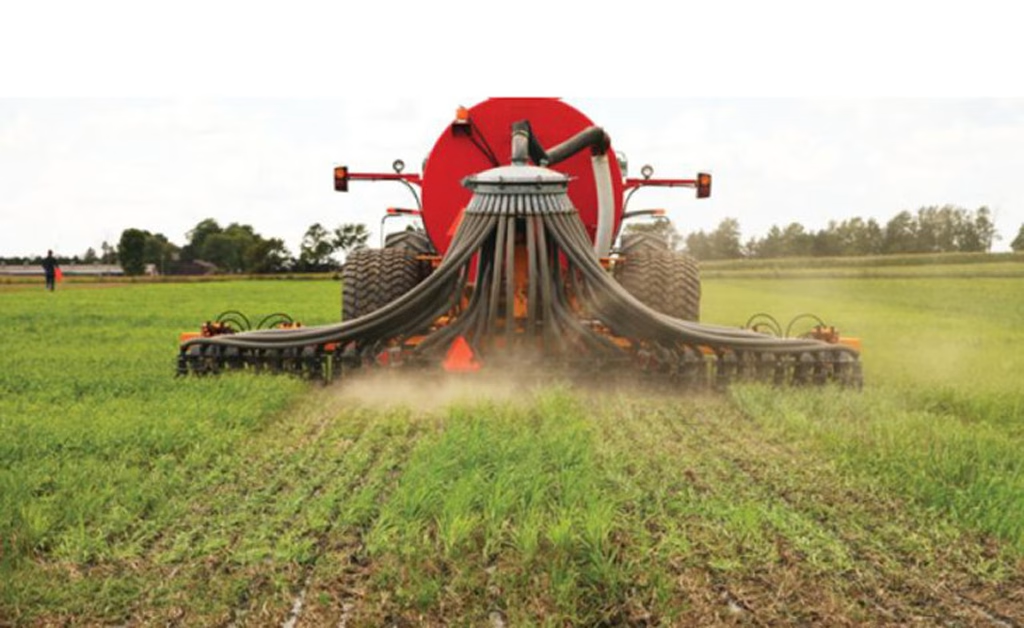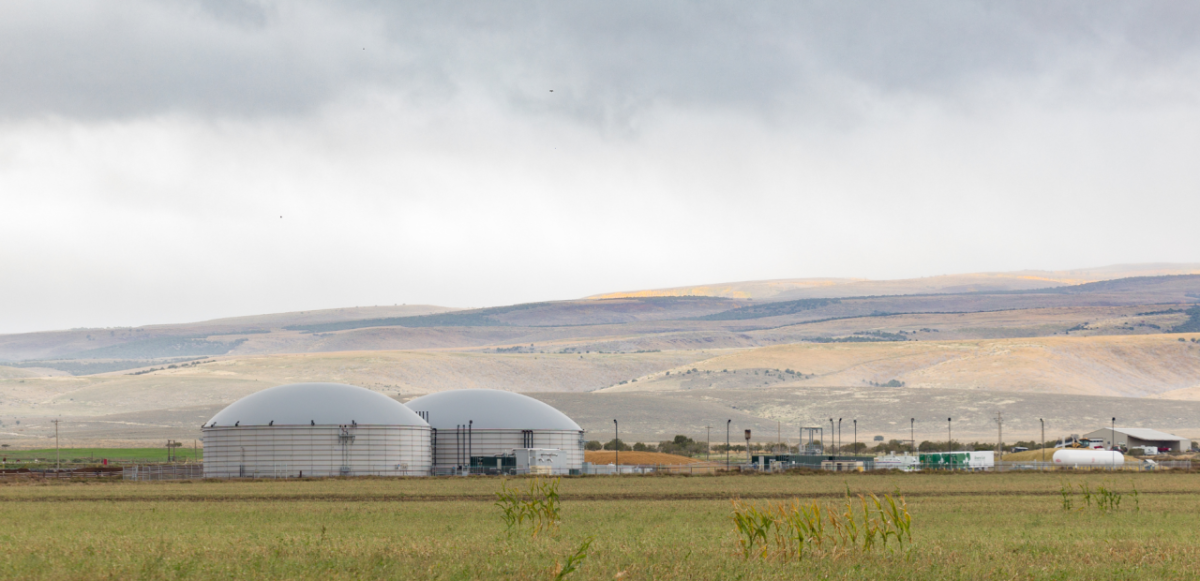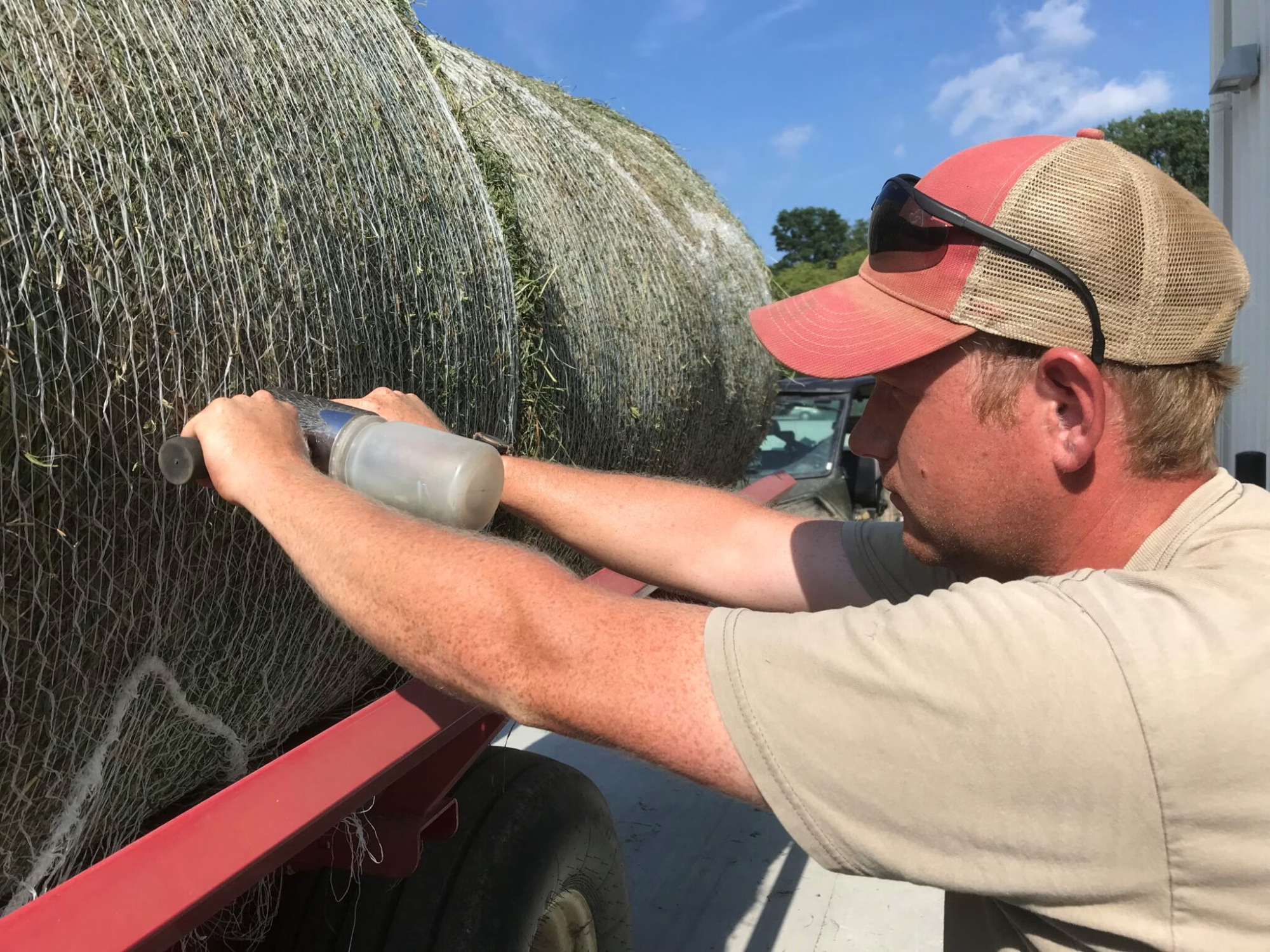Need to improve your manure management? Discover essential tips to prevent spills and safeguard your environment. Ready to boost your farm’s sustainability and safety?
Summary: Dairy farmers, your actions can make a significant difference in preventing manure spills that could threaten the integrity of your farm and the environment. In Wisconsin, a manure spill must be reported if it can potentially threaten surface or groundwater. Taking proactive measures can significantly reduce the environmental threat posed by manure spills, thereby protecting the local ecology and dairy industry. The severity of a spill depends on the environment and proximity to water sources, with factors like timing and weather conditions influencing its impact. For example, a small amount of dung in a stream during hot summer can destroy fish populations. At the same time, runoff issues worsen with thawing ground—nutrient runoff peaks during spring and autumn due to heightened agricultural activity and precipitation. Your commitment to adequate manure management and rigorous training year-round is not just a duty but a hopeful step towards preventing spills, protecting water quality, and maintaining a positive public image.
- Manure spills must be reported in Wisconsin if they threaten surface or groundwater.
- Environmental impact varies depending on proximity to water sources and weather conditions.
- Hot summers amplify the adverse effects of even small spills on aquatic life.
- Thawing ground during spring increases the risk of manure runoff.
- Increased agricultural activity in spring and autumn heightens the likelihood of spills.
- Year-round manure management and training are vital for preventing spills and maintaining public trust.
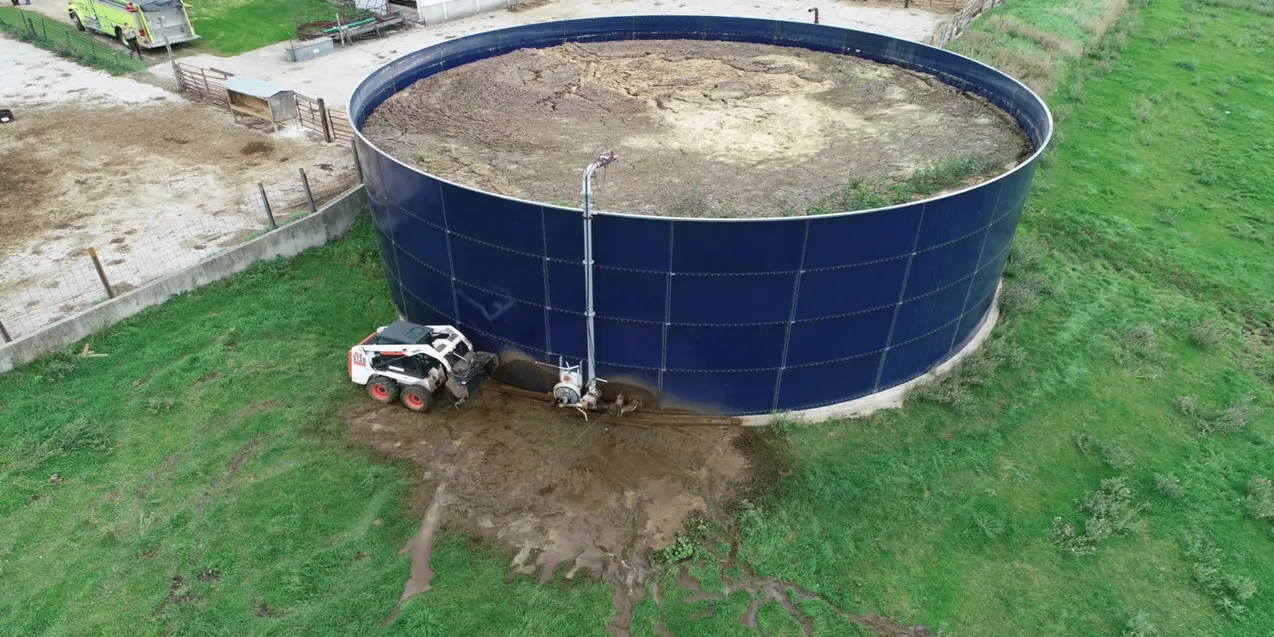
Have you ever considered the environmental effects of a manure spill? It’s more than just an unfortunate accident; it’s a severe problem that could tarnish your farm’s image and harm the local ecology. But here’s the good news: proper manure management is not just a legislative necessity; it’s also a powerful tool for protecting water quality, maintaining a positive public image, and sustaining the ecosystem we all rely on. Just a few weeks ago, Wisconsin experienced two deadly manure-related incidents, highlighting the severity and urgency of this issue.
Recent instances in Sheboygan County are especially alarming:
- A semi-truck delivering manure collided with a train, killing a person.
- A non-farming person violated a stop sign and was hit by a manure transporter, resulting in another fatality.
“Any spill that’s not addressed reflects negatively on the entire dairy industry and is often used as ammunition by anti-farming groups.”
These occurrences show the need to establish effective manure management procedures. It’s more than simply compliance; it’s about your farm’s heritage and your neighborhood’s health. As a farmer or manure applicator, you play an essential and empowering role in avoiding such events and safeguarding the safety of your neighborhood.
Wisconsin’s Manure Spill Reporting: Where Professional Judgment Meets Environmental Stewardship
In Wisconsin, the Department of Natural Resources (DNR) defines a manure spill as any emission of manure that has the potential to pollute surface or groundwater. Wisconsin’s definition is more subjective than other states, which quantify spills in specified quantities. Because of its subjective character, farmers and manure applicators must use their professional judgment to evaluate if a spill should be recorded. Your expert judgment is not just trusted, but it’s also crucial throughout this process.
For example, imagine spreading 15,000 liters of manure per acre over a field. Suppose a tiny spill of five gallons is spread out rather than concentrated. In that case, it is unlikely to be reported since it falls within the average application rate. In contrast, if a comparable volume of manure falls near a trout stream or a sinkhole, the danger to the waterway qualifies as a reportable occurrence. The surrounding environment and closeness to water sources are critical factors in this decision.
The consequences of a spill might also change depending on the time of year. Even a tiny quantity of dung entering a stream on a hot summer day might wipe out the fish population. In contrast, the same amount may have a decreased influence during the winter months, when water activity is reduced. Thus, the time of year substantially impacts the choice to report.
Sound judgment is essential, drawing on personal experiences and professional views. As the farmer, you have the most excellent understanding of your land and its weaknesses. When considering whether a spill should be reported, trust your instincts and understanding since your actions significantly impact public image and environmental stewardship.
Manure Spills: Unseen Threats to Waterways and Aquatic Life
Manure spills severely affect surface and groundwater, altering ecosystems and poisoning water supplies. Manure reaches streams and lakes, contributing to nutrient loading, particularly nitrogen and phosphorus. These nutrients may induce hazardous algal blooms (HABs), depleting water oxygen and creating dead zones where aquatic life cannot thrive. This potential harm to aquatic life should be a strong motivator for us to prevent manure spills.
Its timing and environmental circumstances strongly influence a manure spill’s severity. For example, during the hot summer months, even a tiny quantity of manure in a stream may significantly limit oxygen levels, destroying local fish populations. During colder months, such as March, the water’s lower temperatures mean fish are less active. Therefore, the same amount of dung may have a less immediate effect. However, thaw and frozen ground may worsen runoff problems by transporting manure over longer distances and possibly spreading pollution.
Studies show dramatic variances under various settings. According to Wisconsin’s Department of Natural Resources, nutrient runoff peaks in the spring and autumn, when agricultural activity is highest and precipitation is most common. This discharge pollutes water and upsets ecosystems’ natural equilibrium, causing long-term harm. Research published in the Journal of Environmental Quality discovered that applying manure under rainy circumstances might increase phosphorus losses by 2 to 10 times compared to dry conditions.
Given these possible consequences, farms must conduct adequate manure management year-round. They defend their livelihoods and their communities’ overall environmental health.
Preventing Manure Spills: Best Practices
Let’s discuss some practical ways to reduce manure leaks on your farm. We all understand the necessity of protecting the environment and avoiding headlines that may harm the public’s view of dairy production.
Regular Equipment Maintenance
First, ensure all of your equipment is in excellent shape. Regular inspections may avoid many of the problems that cause spills. Assume you’re transporting manure in the field, and a valve malfunctions. A brief assessment before beginning may have spared you from a costly cleaning effort. Remember that missing pins or loose connections are simple errors that might result in significant difficulties.
Example: One farmer reported a manure leak due to a worn-out tractor connection. A simple replacement during routine maintenance may have averted the problem.
Driver Training
Next, think about your driving training. Are they adequately equipped to deal with the intricacies of manure transport? Training programs are available and may dramatically minimize the likelihood of spillage. It’s not only about driving ability; it’s also about understanding the equipment and knowing what to do if anything goes wrong.
Example: Another typical issue is that novice drivers take too sudden turns, leading the tanker to tilt. Proper training in managing and moving massive equipment may mitigate this danger.
Monitoring Manure Storage Levels
Finally, monitor the amount of manure in your storage area. Overflowing storage is an avoidable calamity. Regular inspections, particularly after severe rains, can help you avoid issues. Installing gauges or indicators makes it easier to keep track of levels.
Example: A Wisconsin farm had a manure pit overflow because no one monitored the levels for a week during the wet season. Simple weekly monitoring may have identified the issue earlier.
Common Mistakes and How to Avoid Them
- Not Training Drivers: Untrained drivers might make expensive mistakes. Regular training sessions and refreshers may help everyone stay sharp.
- Skipping Equipment Checks: Never underestimate the value of regular checkups. Early detection of wear and tear may save you money and reduce environmental impact.
- Ignoring Storage Levels: Make storage inspections a regular part of your farm management. They only take a few minutes and may save you hours of cleaning time and frustration.
Implementing these procedures will safeguard our streams and groundwater while maintaining the integrity of the dairy sector. The work requires dedication, but the benefits—safety, reputation, and peace of mind—are well worth it.
When Chaos Strikes: Why Every Farm Needs an Emergency Response Plan
Consider the worst-case scenario: a manure leak happens on your farm. Panic sets in, and everyone scrambles to act, but without a well-planned strategy, anarchy ensues. This is why having an emergency response plan is not a choice but a need. This approach guarantees that everyone knows their duties, understands the communication procedures, and can act quickly and effectively to manage and contain the spill.
First, let’s discuss roles and duties. Your response plan should specify who is liable for what in the case of a spill. This involves appointing a principal leader who will take command and make crucial decisions and delegating particular duties to team members, such as equipment shutdown, site security, and early containment measures. Everyone should understand their responsibilities to prevent misunderstanding when time is of the essence.
Next, suitable communication methods are essential. The strategy should include communicating within the team and with other parties, such as local governments, insurance companies, and environmental organizations. Ensure you have a communication tree with contact information for all essential parties and who will be in charge of external communications. This reduces the spread of disinformation and keeps all parties informed.
The strategy should expressly state what urgent activities to take. It should include procedures for immediate spill control, such as turning off any pumps, employing absorbent materials, and erecting barriers to prevent spread. These efforts are crucial to preventing the spill from spreading and causing more environmental harm. A readily available spill response kit may significantly speed up the procedure.
Finally, the value of implementing the strategy must be emphasized more. Regular drills will familiarize your staff with the processes and guarantee that everyone can respond quickly and effectively in an emergency. Annual review and update of the plan to accommodate new equipment or changes in people may substantially impact your level of preparation.
A well-executed emergency response strategy is your first line of protection against manure spills. It protects the environment and builds your farm’s reputation for responsible management. So, take the time to create, share, and rehearse your plan—you’ll thank yourself when the unexpected occurs.
Real-Life Lessons: Tragedies and Triumphs in Manure Spill Management
Consider a recent event in Sheboygan County, in which a manure semi-truck collided with a train, killing the driver. The loss is terrible, but it emphasizes the importance of awareness and safety training. Proper planning and a strong knowledge of traffic routes, particularly those that overlap with rail lines, might have reduced this danger. One crucial insight is that frequent scenario-based training might help prepare drivers for unexpected problems.
In another Sheboygan County incident, an inattentive motorist ran a stop sign and slammed with a manure lorry, killing another person. This terrible event highlights the need for visible and effective communication tools on agricultural equipment, such as bright, clean reflective tape and functional turn signals. Regularly maintaining these measures improves road safety for agricultural workers and the general public.
A less tragic but equally revealing occurrence happened when a manure truck turned too sharply, depositing thousands of liters onto the roadway. The main problems here were driver weariness and error. Farmers may arrange frequent breaks and change drivers to keep them attentive, reducing the likelihood of expensive errors. Encouraging drivers to take obligatory rest breaks may minimize fatigue-related mistakes, resulting in safer transport.
Another incident in Dodge County involved a farmer who needed help getting essential equipment to treat an overflowing manure pile due to inadequate tool availability prioritizing. He spent crucial time moving other machines to the chisel plow required to clean up the spill. Following this occurrence, the farmer acquired a specialized chisel plow for emergency usage, kept it in an easily accessible area, and dramatically enhanced his farm’s preparedness for future situations.
These real-life situations have a similar theme: readiness and good management are not merely regulatory compliance procedures but also critical for safety and environmental stewardship. Comprehensive training, frequent equipment maintenance, and fast access to required instruments may all help to avoid or reduce the severity of incidents, protecting both people and the environment.
Public Image: The Invisible Stake in Manure Spill Management
When dealing with manure spills, the farm’s public image is more than simply an afterthought; it’s critical. Any spill, mild or severe, may quickly damage the reputation you’ve created through years of hard effort. When the community learns of an uncontrolled manure leak, their view instantly shifts. If not handled swiftly and publicly, such instances give great fodder for anti-farming parties looking to expose industry flaws.
- Visible Action During and After Spills
- Maintaining community trust depends on controlling spills and being seen to manage them. Swift, visible action communicates accountability while mitigating possible reactions. When a spill happens, it is critical to have a committed person on-site who can supervise the cleaning and speak with any spectators or authorities. This individual should oversee operations and communicate with the community, holistically detailing the steps to solve the problem. Such candor builds confidence and demonstrates that you are not concealing the issue but are actively attempting to fix it.
- Responding to Anti-Farming Sentiments
- Anti-farming organizations sometimes use situations like manure spills to further their agendas, affecting public opinion and legislation. Demonstrating your farm’s dedication to ecologically sound methods is critical to mitigate their effect. Regular updates to the community on preventative measures and prior successes in manure management might help to avoid unfavorable depictions. Furthermore, a well-documented emergency response strategy and training demonstrate your commitment to reducing environmental impact.
To summarize, proactively controlling manure spills entails more than simply environmental responsibility; it also requires careful consideration of your farm’s reputation and community connections. Transparency, prompt response, and continued communication are the foundations of public trust, reducing the negative consequences of spills and protecting your farm’s image.
Reporting Manure Spills: The Crucial Role of Professional Judgment and Rigorous Standards
In Wisconsin, the Department of Natural Resources (DNR) requires that any manure spill that could harm surface or groundwater be notified promptly. This criterion is based on expert judgment rather than a particular number, distinguishing Wisconsin from neighboring states that often have more measurable limits, such as five or 100 gallons.
The restrictions for big farms, known as Concentrated Animal Feeding Operations (CAFOs), are more rigorous. CAFOs with a Wisconsin Pollutant Discharge Elimination System (WPDES) permit must report every spill, regardless of size, to the DNR. The zero-tolerance approach provides increased inspection and environmental protection.
In contrast, smaller enterprises depend mainly on human judgment to establish whether a spill is reportable. While the flexibility allows for situational evaluation, it also burdens the farmers’ judgment. These operators need proper training and knowledge to maintain environmental safety and regulatory compliance.
For farmers looking to stay compliant, several resources are available:
- Wisconsin DNR: Provides detailed spill reporting guidelines and requirements.
- EPA NPDES Compliance: Information on federal regulations and CAFOs.
- Wisconsin Department of Agriculture, Trade and Consumer Protection: Offers nutrient management resources and training.
- Iowa Farm Bureau and Iowa Manure Management Action Group (IMMAG): Additional insights into management practices.
Immediate and accurate reporting not only aids in swift resolution but also upholds the public image of the farming community. Farmers must familiarize themselves with both state-specific and federal regulations to mitigate risks and maintain environmental integrity.
Empowering Manure Handlers: The Value of Training and Certification Programs
Training and certification programs are critical to the successful management of manure applications. Manure handlers with sufficient training are better prepared to control and avoid spills, ensuring environmental safety and operational efficiency.
In Wisconsin, various programs exist to certify manure applicators. The University of Wisconsin Extension provides comprehensive training and certification programs on critical issues such as safe application practices, equipment maintenance, and emergency response procedures. The Manure Applicator Association of Wisconsin also offers specific training sessions for English and Spanish-speaking applicators.
The benefits of having certified staff are enormous. Statistics show that skilled applicators experience fewer occurrences. For example, private sector auditors state that the frequency of claimable occurrences involving licensed applicators has decreased by more than 80%. This reduces environmental concerns while improving the farm’s public image and operational dependability.
Beyond spill avoidance, qualified staff are more skilled at managing equipment and are current on the newest best practices. This knowledge improves nutrient management, lowering the risk of overapplication and subsequent runoff. Furthermore, professional applicators are skilled at spotting and treating possible dangers before they cause serious problems, protecting the farm’s reputation and the surrounding ecology.
Investing in manure applicator training and certification is more than legal compliance; it is a proactive approach to sustainable farm management. It signifies a dedication to quality and accountability, ensuring that manure application is carried out safely, efficiently, and by environmental requirements.
The Bottom Line
Managing manure is more than simply meeting legal requirements; it’s about maintaining our shared water resources, aquatic life, and the dairy industry’s reputation. Regular equipment maintenance, complete driver training, continuous monitoring of manure storage levels, and a well-practiced emergency reaction plan are all critical measures that considerably decrease the danger of leaks. Each action reduces environmental effects while demonstrating a farm’s commitment to responsible management.
Because most manure spills are avoidable, every farm manager and owner must ensure that their operations prioritize these preventative procedures. As previously noted, the consequences of neglect may be severe, ranging from legal ramifications to negative impacts on community relations and the natural environment. Adopting these best practices is much more than a suggestion; it is necessary for the farm’s and the environment’s long-term viability.
So, as a steward of your property and the larger ecology, consider whether you are prepared to deal with a manure leak. Have you invested in the training and tools required to avoid accidents and react promptly if they do occur? Taking action now may make all the difference tomorrow. Protect your farm and the environment—the future of agriculture relies on it.







